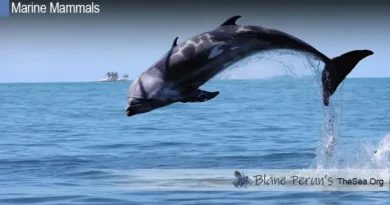Australian Snubfin Dolphin
Australian Snubfin Dolphin: Unveiling the Mysteries of the Ocean’s Unique Inhabitant
Introduction
The Australian Snubfin Dolphin, a remarkable marine mammal, has captured the attention of scientists and nature enthusiasts alike. This dolphin species, unique to Australia’s northern waters, stands out for its distinct physical features and fascinating behavior. Delving into the world of the Snubfin Dolphin not only broadens our understanding of marine biodiversity but also highlights the importance of conservation efforts for these extraordinary creatures.
Physical Characteristics: A Distinctive Marine Mammal
The Australian Snubfin Dolphin (Orcaella heinsohni) is easily identifiable by its rounded, snubbed dorsal fin and a unique color pattern. Unlike many dolphin species, Snubfin Dolphins have a tri-color pattern, with a darker dorsal area, a lighter belly, and a distinct middle band. This characteristic coloration aids in camouflage and predator evasion. Adult Snubfin Dolphins typically measure between 2 to 2.5 meters in length, making them one of the smaller dolphin species.
Habitat and Distribution: Northern Australia’s Coastal Gem
Snubfin Dolphins primarily inhabit the shallow, coastal waters off northern Australia, from Broome in Western Australia to the Gladstone region in Queensland. These waters provide a rich ecosystem, abundant in the fish and invertebrates that form the diet of the Snubfin Dolphin. The mangrove-lined estuaries and murky waters of this region offer an ideal habitat for these elusive creatures.
Behavior and Social Structure: Understanding Dolphin Dynamics
In terms of social behavior, Snubfin Dolphins are known for their relatively small group sizes, often consisting of 2-10 individuals. These groups tend to be tight-knit, with strong social bonds and cooperative behaviors. Observations have shown that these dolphins engage in a variety of playful activities, including leaping and surfing in the wake of boats.
Diet and Feeding Habits: Predators of the Shallow Seas
The diet of the Australian Snubfin Dolphin mainly consists of small fish, cephalopods, and crustaceans. These dolphins employ a unique feeding strategy known as spit-feeding, where they spit water to herd or disorient their prey. This behavior not only demonstrates their intelligence but also their adaptability to the coastal environments they inhabit.
Reproduction and Lifespan: A Cycle of Life in the Ocean
Reproduction in Snubfin Dolphins follows a similar pattern to other dolphin species, with a gestation period of approximately 11 months. Calves are born at a length of about one meter and are dependent on their mothers for the first few years of life. The lifespan of Snubfin Dolphins is not well-documented, but it is estimated to be similar to other dolphins, potentially reaching up to 30 years.
Conservation Status: A Species at Risk
The Australian Snubfin Dolphin is classified as a vulnerable species, with threats including habitat destruction, water pollution, and accidental capture in fishing gear. Conservation efforts are crucial for the survival of this species, and include habitat protection, pollution control, and sustainable fishing practices.
Conclusion
The Australian Snubfin Dolphin, with its unique features and behaviors, is an integral part of the marine biodiversity of northern Australia. Understanding and protecting this species is not only essential for its survival but also for the health of the marine ecosystems they inhabit. Continued research and conservation efforts are needed to ensure the future of the Snubfin Dolphin and the rich marine life of Australia’s waters.
FAQs
- What sets the Australian Snubfin Dolphin apart from other dolphin species? The Australian Snubfin Dolphin is distinguished by its unique tri-color pattern, rounded dorsal fin, and smaller size.
- Where can Australian Snubfin Dolphins be found? They are primarily found in the shallow coastal waters off northern Australia, from Western Australia to Queensland.
- How do Snubfin Dolphins feed? They use a unique spit-feeding technique to herd or disorient prey.
- What are the main threats to the Snubfin Dolphin population? The main threats include habitat destruction, water pollution, and bycatch in fishing operations.
- Why is conservation important for the Snubfin Dolphin? Conservation is crucial for protecting this vulnerable species and maintaining the health of the marine ecosystems they inhabit.




